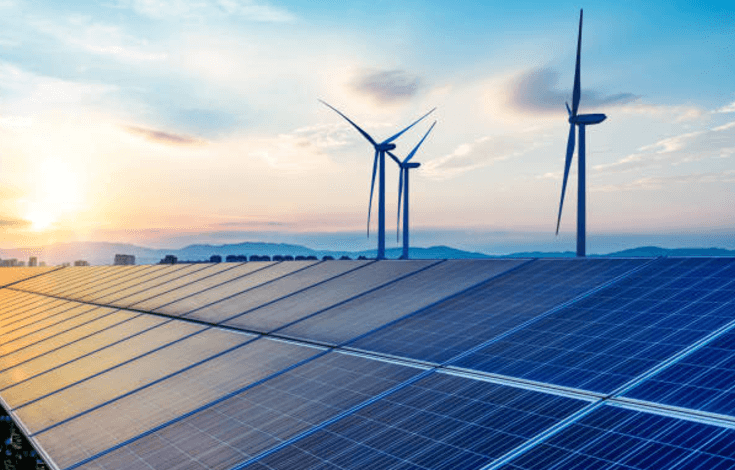Why Solar Power Stations Are Essential for a Sustainable Future

As the global population grows and the need for energy increases, the pressure on traditional power sources like fossil fuels is becoming unsustainable. Not only are these energy sources finite, but they also contribute significantly to environmental degradation and climate change. Solar power stations, which capture the sun’s energy to produce electricity, are becoming a vital part of the shift toward a more sustainable and renewable energy future. In this article, we’ll explore why solar power stations are not just an option, but an essential part of a greener, more sustainable world.
Understanding Solar Power Stations
What is a Solar Power Station?
A solar power station, also known as a solar power plant or solar energy farm, is a large-scale facility that captures sunlight and converts it into electricity. These stations consist of thousands (or even millions) of solar panels that work together to generate significant amounts of energy. The electricity produced can be fed into the national grid or used locally in communities, industries, or businesses.
There are different types of solar power stations, including:
- Photovoltaic (PV) Systems: These use solar panels to directly convert sunlight into electricity.
- Concentrated Solar Power (CSP): These use mirrors or lenses to concentrate sunlight onto a small area, generating heat that is then used to produce electricity.
Both types contribute to renewable energy generation, but the most common and rapidly expanding type is photovoltaic systems, which are used in both residential and commercial applications.
See also: What are the key techniques for successful show jumping?
How Do Solar Power Stations Work?
Solar power stations work by harnessing sunlight and converting it into electricity using solar panels. When sunlight hits the panels, it is absorbed by photovoltaic cells, which generate direct current (DC) electricity. This DC electricity is then converted into alternating current (AC) electricity through an inverter, making it usable for homes, businesses, or the electrical grid.
The electricity generated by solar power stations can be distributed through the grid, stored in batteries for later use, or even used directly in industrial operations. Modern solar plants are designed to optimize energy production, even during cloudy or overcast conditions, and to ensure that the generated power can be utilized efficiently.
Why Solar Power Stations Are Key to a Sustainable Future
1. Renewable Energy: Reducing Our Dependence on Fossil Fuels
The Environmental Cost of Fossil Fuels
The continued reliance on fossil fuels like coal, oil, and natural gas is one of the main drivers of climate change. Burning fossil fuels releases large amounts of carbon dioxide (CO2) and other greenhouse gases into the atmosphere, leading to global warming, rising sea levels, and extreme weather events. These fuels are also non-renewable, meaning they will eventually be depleted, which adds to the urgency of transitioning to sustainable energy sources.
Solar power stations, by contrast, produce zero-emission energy. They rely on the sun—an inexhaustible resource—as their primary fuel, making them a key solution for reducing our dependence on polluting and finite energy sources. By scaling up solar power generation, we can significantly lower global greenhouse gas emissions and help combat the climate crisis.
Solar Energy: A Clean, Infinite Resource
The sun provides more energy to the Earth in one hour than the entire world uses in a year. Solar power stations capitalize on this virtually unlimited source of energy. As long as the sun shines, solar power stations can continue to generate electricity, making it a truly sustainable and long-term energy solution. Unlike fossil fuels, solar energy doesn’t require extraction, transportation, or refining, all of which come with environmental costs.
2. Economic Benefits: Jobs and Cost Savings
Job Creation in the Solar Industry
The solar energy industry has seen explosive growth in recent years, providing job opportunities in both the construction and operation of solar power stations. According to reports from the International Renewable Energy Agency (IRENA), the solar sector employs millions of people worldwide, from solar panel manufacturers to project managers, electricians, and engineers. As more solar power stations are built, this number is expected to grow, contributing to job creation and economic development.
Solar power stations can stimulate local economies by bringing new projects to regions that may have limited industrial development. For example, many solar farms are being built in rural or desert areas where land is affordable and abundant. This can revitalize communities, provide income opportunities, and help reduce poverty in certain regions.
Lowering Energy Costs for Consumers
While the initial investment in solar power stations can be high, the cost of solar energy has dropped dramatically in recent years. This is largely due to technological advancements, economies of scale, and increased competition in the solar industry. As a result, solar power is becoming more affordable for consumers, both for individual installations and on a larger, commercial scale.
In some regions, solar power stations can provide cheaper electricity than fossil-fuel-based plants. Once a solar plant is built, its operational costs are minimal compared to conventional power stations, where fuel is a major ongoing expense. Over time, this can lead to lower energy bills for consumers and businesses, further driving the adoption of solar power.
3. Energy Independence: Reducing Reliance on Imported Fuels
Energy Security Through Localized Solar Power
One of the most important benefits of solar power stations is the potential for energy independence. Many countries, particularly those without significant domestic energy resources, rely on importing fossil fuels to meet their energy demands. This reliance can create vulnerabilities in the economy and energy supply, especially during times of geopolitical instability or natural disasters.
By investing in solar power stations, countries can diversify their energy mix and reduce their dependency on foreign energy sources. Solar power is particularly useful in regions with abundant sunlight, such as deserts, where solar farms can produce large amounts of energy without reliance on external imports. This not only enhances energy security but also provides greater control over national energy infrastructure.
Decentralized Energy Distribution
Solar power stations can also contribute to decentralized energy distribution, where electricity is generated closer to where it is consumed. This reduces the need for long-distance transmission lines, which can be costly to maintain and vulnerable to disruptions. Distributed solar power generation can make local energy systems more resilient and less dependent on centralized power plants.
4. Sustainability in the Long-Term: Minimizing Waste and Land Use
Sustainable Land Use and Ecosystem Integration
Unlike fossil fuel-based power plants, solar power stations generally require less land and have a lower environmental impact when integrated thoughtfully into ecosystems. Solar panels can be installed on rooftops, in desert areas, or on agricultural land without causing significant harm to the environment.
In some cases, solar power stations can be combined with agriculture in “agri-voltaic” systems, where crops are grown beneath solar panels. This dual-use approach can help maximize land productivity while producing clean energy. Furthermore, solar panels have long lifespans (typically 25-30 years), and with proper recycling programs, the waste generated from old panels can be minimized.
The Minimal Environmental Impact of Solar Power Stations
Solar power stations do not pollute the air, soil, or water, unlike coal or natural gas power plants, which release harmful emissions into the atmosphere. The main environmental concerns with solar power stations involve land use and the production of solar panels, but these impacts are much lower than those associated with fossil fuel-based power generation.
As technology advances, the efficiency of solar panels is improving, and the environmental footprint of manufacturing them is decreasing, making solar power stations an even more sustainable option for the future.
Conclusion: Solar Power Stations as the Future of Energy
Solar power stations are not just an alternative energy source—they are essential for a sustainable future. They offer renewable, clean, and affordable energy that can help reduce global carbon emissions, create jobs, and reduce our dependence on fossil fuels. By investing in solar infrastructure and expanding solar power capacity, we can create a cleaner, more resilient, and economically prosperous world.
The transition to solar energy is already underway, but it requires continued innovation, investment, and political will to accelerate its adoption. As solar power becomes more widespread and accessible, it will play a key role in achieving global climate goals, improving energy security, and ensuring a sustainable future for generations to come.



